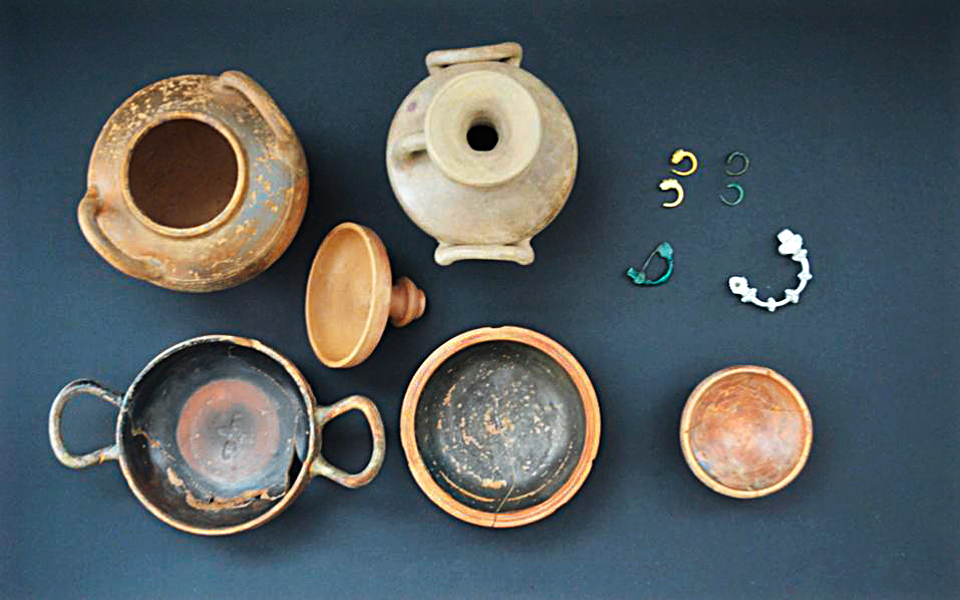A new page in the history of Kastoria has been turned after the discovery of a treasure trove of archaeological finds in the region.
Three cemeteries with rich burials sites from different historical periods, and of great value to archaeological and historical research, were recently unearthed, opening a new chapter in the history of hitherto unknown eras of the region –the Archaic and Hellenistic periods, about which little was known until now.
The three burial sites were found in Krepeni in the village of Mavrochori. The oldest, around 1.5-1.8 hectares in size, dates from the early Iron Age (8th-7th century BC) with burials in simple pits, which were either rectangular or box-like in shape.
Around 300 meters from the first, 20 graves with unique artifacts s were uncovered at the second site, dating from the Archaic period (6th century BC).The third grave site is from the early Hellenistic period, dating to the last quarter of the 4th century BC, or the early 3rd century BC.
Jewelry, buckles, copper pins, spearheads, knives, coins, zoomorphic vessels, colorful glass perfume bottles and Corinthian pottery indicate the different burial customs and social stratifications of the unknown settlements, which most likely flourished within walking distance from the cemeteries.
In the Archaic tombs, the bodies were laid out in the supine position on platforms of wood or other perishable material, amid precious offerings. Multiple rows of bronze bracelets appear typical, which covered not only the two upper limbs of the body, but, in one case, the legs as well.
The bones beneath the bronze bracelets are intact, but no other skeletal material survives, explains the head of the excavation, Dr Georgia Stratoulis, head of the department of Prehistoric and Classical Archaeological Sites, Monuments and Museums.
The Hellenistic burial sites show a society with a robust economy , which existed almost two centuries after the Archaic period. It seems that after the death of Alexander the Great, his soldiers returned from the war in Asia to their homeland. Kastoria and the northwest of the country flourished.
The region’s growth is exemplified by the rich burials at Krepeni that are similar to those found in many other cemeteries of the Macedonian Kingdom.
“A remembrance of immortality” is how Dr Stratoulis describes the burial sites. The sites were visible from a distance as small, low mounds of soil projecting out and hinting at their purpose, but excavations had not taken place until now. The findings are bound to enrich our knowledge of the country’s northern region.
The findings of Krepeni herald the 29th annual three-day archaeological meeting, which is scheduled for Thursday, March 3 at 09:30 am at the ceremonial hall of the Aristotle University of Thessaloniki. More than 80 announcements regarding excavation work in Macedonia and Thrace will be made, including the site of Amphipolis.










